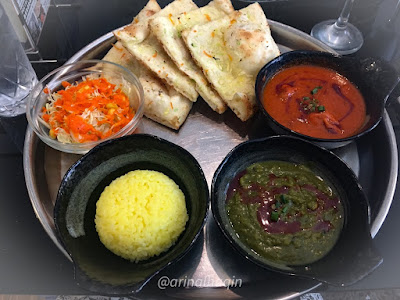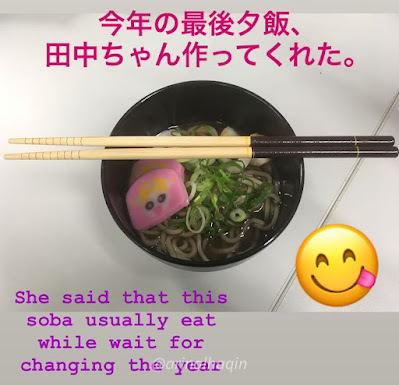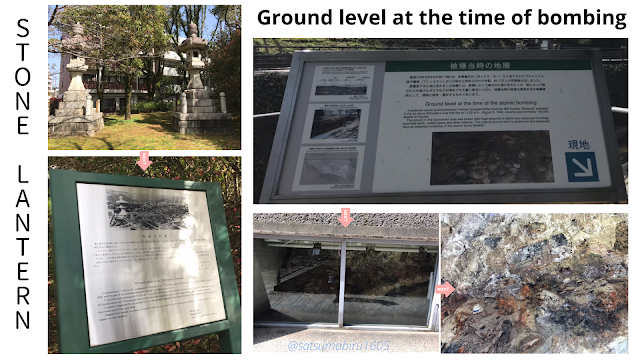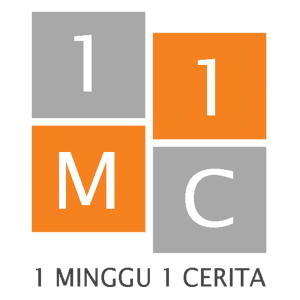The year of 2021 soon will end. How will you celebrate the new year of 2022? Well, I celebrated new year in Japan four times in this post I would like to write some of those experiences.
Hopes you will enjoy my stories 😉
New Year of 2018
I was a research student at that time (a stage before entering full time student in Japan), just three months after my arrival in Japan. I thought that New Year in Japan is same as other countries. There would be fireworks, people gathers with friends or families to stay up the whole night waiting for changing of the day. Daily life would go as normal day without any hardships.
But, everything was out of my expectations.
I was told to prepare enough money and food as post office (I am a JP Post Bank customer), groceries shop will close during New Year holiday, and garbage will not be collected the first 4 days in January.
Later I know that actually no problem with money, because JP Post have many ATM machines in big mall that open during holiday. Just be sure to prepare some 1000 Yen if you plan to go somewhere with public transportation, because the biggest amount accepted by machine money exchanger is only 1000 Yen. But for food, I think it's better to prepare some for at least 2 days. The convenient store (Famima, 7 Eleven, etc) is still open for 24 hours, you know the price a little bit higher than supermarket, but still okay in case of you really don't have something to eat. The garbage really problem actually on namagomi (生ごみ)only (the left over food, vegetable, fish, etc) that we should make sure to empty the bin by the end of December or we will keep at least until January 4.
Because I didn't know, I spent the New Year Eve with my friends eating out at Ruposhi Bangla (Bangladesh Restaurant of Curry). As far as I know, it was the only restaurant open in that time. After 1 hours ate the add freely nan package (Ladies Set) menu, my friend wanted to buy a discounted winter jacket in a clothes shop quite far by bicycle from international dormitory. It was strange that no one in the pedestrian street that night except three of us. As we arrived, the shop closed.
This moment I would remember for the entire my living time in Japan. Looking for something I can do in my apartment is way much better than strolling around on the cool night of New Year's Eve.
 |
| Ladies set Curry in Ruposhi Bangla |
I went back to dormitory and watch online movie. Exactly a minutes before 00.00, the temple bell ringing simultaneously. Later, I know that this is the way Japanese celebrate the year changing moment.
January 1st, we went to Senganen, a world heritage Japanese garden in Kagoshima. As far as I know, Senganen is the only tourism resort that open on January 1 to 3 in Kagoshima City. They offer free entrance for visitors who wears kimono on that day. They also have special event of serving mochi and sake during New Year.
New Year of 2019
In my first year of PhD, I still came to laboratory until December 31, 2019. I ate Bangladesh Curry with my Korean friend before 19.00 pm and back to laboratory trying to work on my paper.
My 4th year of undergraduate junior come and bring soba (buckwheat noodle) to laboratory. She cooked us soba and said that Japanese eat soba on New Year Eve. She ate soba with her friends while watching Kohaku. Later I know that soba eaten during New Year's Eve called as toshikoshi soba, because the association that eating long noodles with crossing over from one year to the next year. And Kohaku is an annual New Year's Eve television program that broadcast live simultaneously. The show ends shortly before midnight. This may be the alternative activities can be enjoyed during New Year's Eve better than strolling around.
My Indonesian junior asked to see fireworks at Dolphin port (a place famous for summer fireworks festival in Kagoshima City), but I rejected it. I'm sure that there will no fireworks as fantastic as summer festival. And it was.
Again I spent New Year's Eve by watching online movie while waiting the bell ringing in my apartment. A little bit I know about New Year's Eve ringing bells in Japan that called Joyanokane (除夜の鐘). The bell will ringing 107 times on December 31st and once after the time past 00.00.
January 2nd, I and my Indonesian juniors stayed overnight in our Japanese mother's home which we ate osechi and nabe for dinner.
Osechi also traditional food that commonly made each household for several days of the New Year. My sensei said that it's because from the old time no market open during new year season. But, recent year supermarket also sell osechi.
 |
| Osechi sold in Supermarket |
New Year of 2020
The 3rd year of my stay in Japan, I plan to celebrate with some Japanese friends. However, as hard as I try to arrange the plan, I couldn't make a match agreement spend New Year's Eve with them. I gave up!! Just know myself that I am foreigner. Simply, because New Year in Japan is special for Japanese almost same like Idul Fitri Indonesian and Malaysian.
I cancel the whole trip I arranged and choose to stroll around the mall in Kagoshima with my senior looking for New Year Lucky Bag (福袋, Fukubukuro). Fukubukuro is a bag that be sold in the shopping center in Japan in the first day of New Year. The bag contains clothes, bag, shoes, food, etc (depend on the place you buy. If you are in cosmetics store, probably they sell fukubukuro of cosmetics only) that priced three times than normal price. However, we don't know the content specific except the size for clothes even though usually the good quality. Sometimes, the content doesn't meet our preferences. Be wise before buying!
 |
| Fukubukuro in AEON Mall Kagoshima |
I still came to laboratory to do some work and left a small gift on my junior desk. My Chinese junior in lab asked me why still I came to laboratory even tomorrow is New Year. I just smile, because really, I don't feel that New Year is something special. Even I don't have an album photo namely 'New Year' in my phone and PC.
January 1st, we stroll around AEON Mall Kagoshima in Usuki. There are a lot of sport equipment center that I interested in though finally we bought nothing. Uniqlo new product is way more attractive.
 |
| New Year 2020 decoration in AEON Mall Kagoshima |
January 2nd, we stroll around AMU Plaza, Opsia, and Sport Depo. My senior bought a package of perfume that she said was cheap. I bought a Fukubukuro of cosmetic in Etude House, as I don't really care about cosmetic but I need a set of them to be used on formal events.
 |
| Discounted Perfume in AMU Plaza Kagoshima |
Then, we went to Opsia Apple Centre because she wanted to buy Ipad. Although there is no such Fukubukuro for Apple product, but the little bit old product price is much more cheaper in New Year. And finally, I found the Adidas sport equipment fukubukuro in Sport Depo.
 |
| New Year 2020 decoration in Opsia Kagoshima |
New Year of 2021
The case of covid-19 infection increased again since the autumn of 2020 so that New Year of 2021 we are prohibited to travel. Big cities such as Tokyo Metropolitan, Osaka, Kyoto, Nagoya and Okinawa was in State of Emergency.
Although in Kagoshima was least restricted, but no tourism spot allowed to be opened for public during New Year holiday. Shopping center still have Fukubukuro as usual, but least crowded than previous year. I expected that this New Year way more silent than ever. People prefer to spend the New Year in their own home with family.
I asked my senior whether they want to spend New Year in Japanese way. After they agree, I asked my Japanese mother whether it is okay to spend Nabe party in her home. Then we would have Nabe party at January 1, 2021.
The last night of December 31, 2020 I bought set of soba from Akebono (a grocery near my apartment) and set of zenzai with mochi. I spent the night watching series of Kimetsu no Yaiba in Amazon Prime until midnight. It was so cool so that I felt hungry. Then, I ate the New Year Soba.
 |
| Soba |
I woke up early in the morning, hopes that I can see hatsuhinode (first sunrise) from my balcony. But I wasn't lucky because the sun was blocked by higher building near my apartment.
 |
| First Sunrise |
Normally I don't eat breakfast, but just for the New Year I warmed the zenzai with mochi using microwave. Tada!! Ready to warm the rest of the day. Zenzai is sweet red bean soup.
 |
| Zenzai |
Because my friend need to perform Jum'ah prayer, we went to our Japanese mother home after Jum'ah prayer (13.00 pm). We took the same bus from different bus stop and we will get off at the bus stop in Sakanoue. I visited her house for more than three times, but still couldn't memorize the way to her home exactly. We got lost! I call her and actually we were not that far away from her house 😁
And I take the picture of Sakurajima and the Kinkowan Bay from her balcony. We helped the preparation for Nabe party with cutting the vegetables.
 | ||
Sakurajima View from Sakanoue
|
After sholat maghrib, we strolling for Fukubukuro in AEON Mall Kagoshima. The situation was not as crowded as a year before, but still many people comes. Here I bought nothing, because I was thinking of my luggage space when I return on Indonesia in the end of March.

|
| New Year 2021 decoration in AEON Mall Kagoshima |
That all my experience celebrating New Year in Japan. It is not common festival than other world, but if you know how to celebrate, I think it's interesting by its own.
Happy New Year everyone!


























